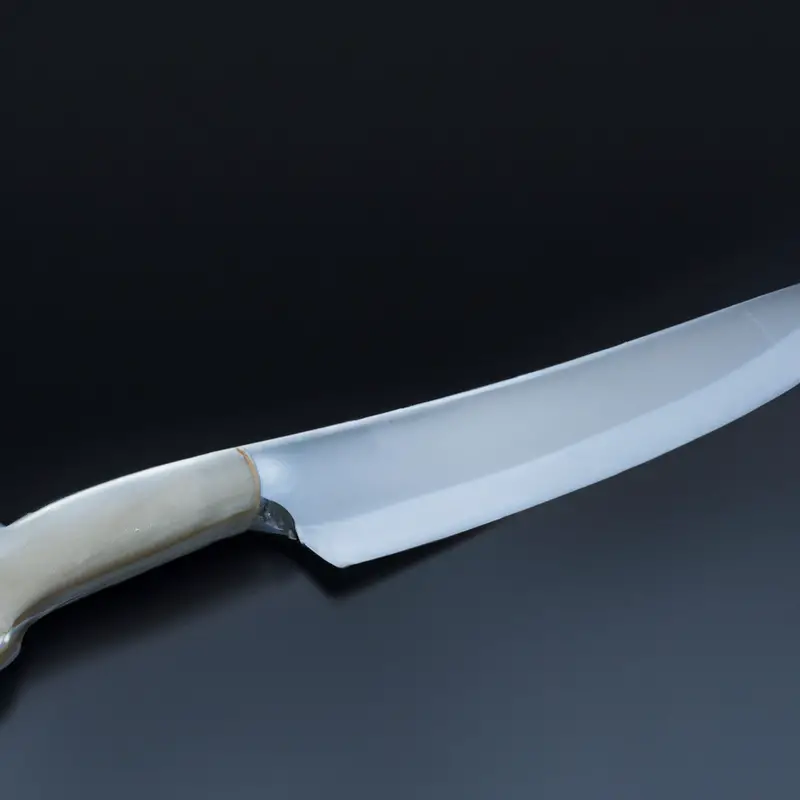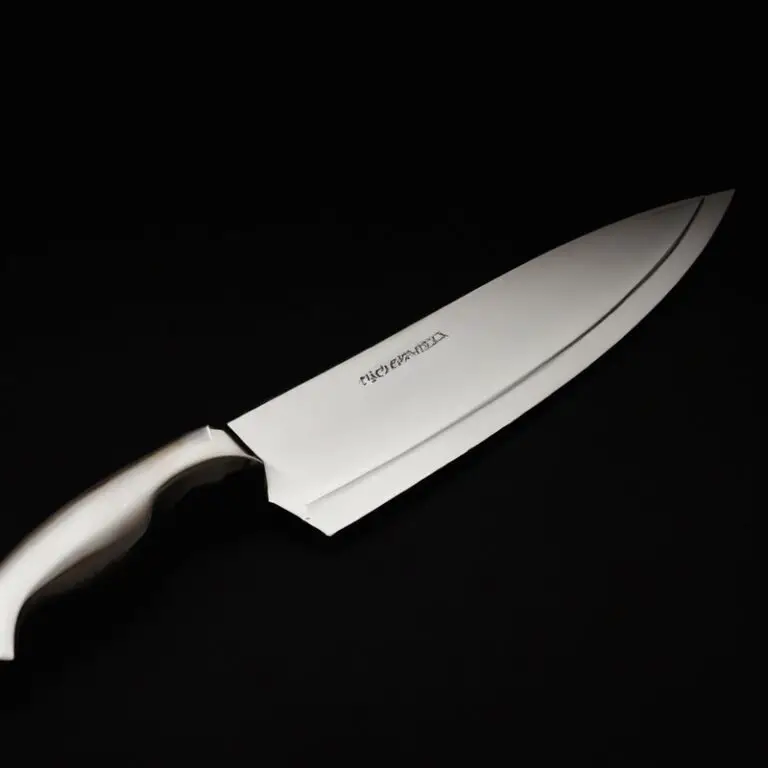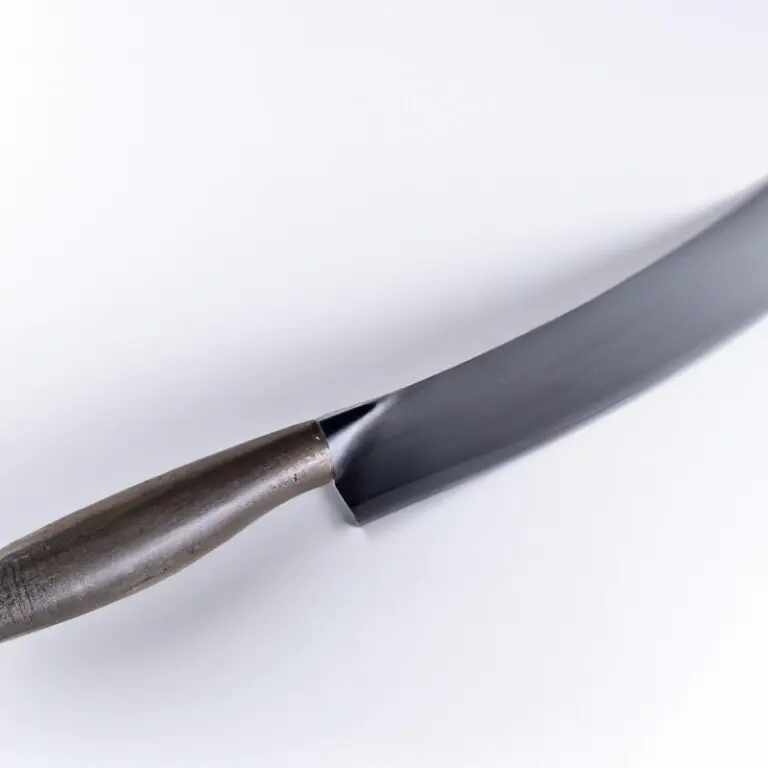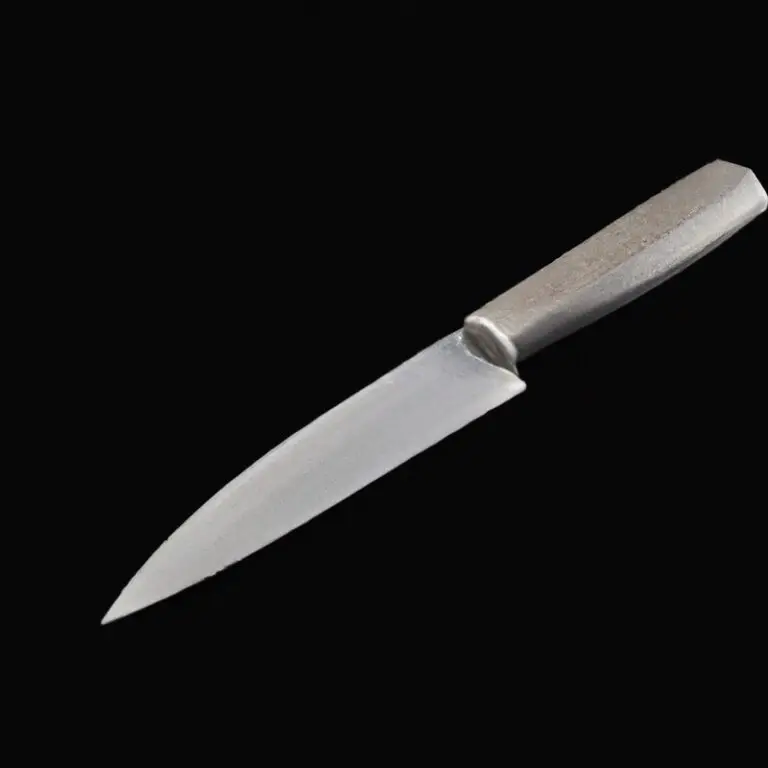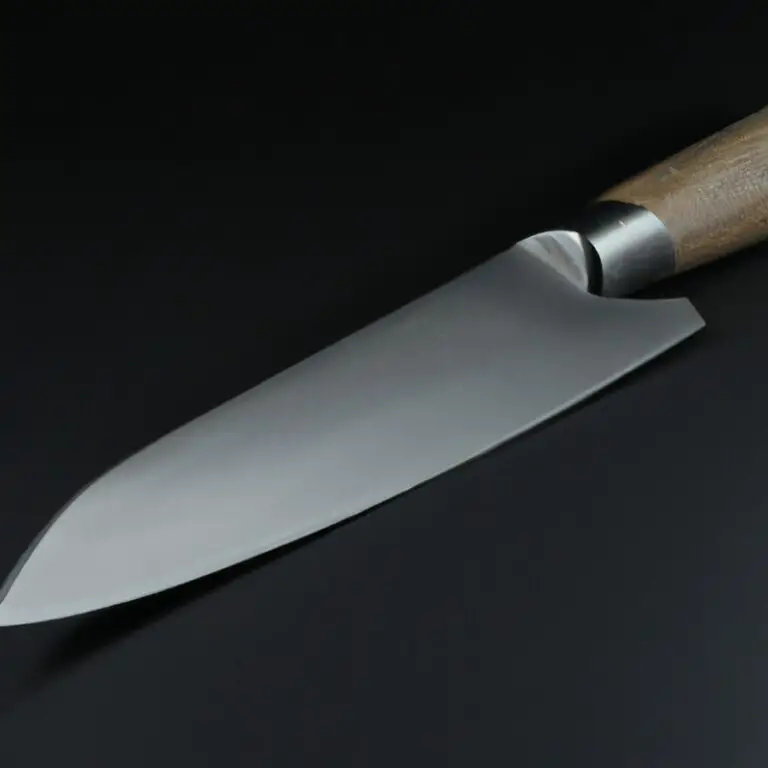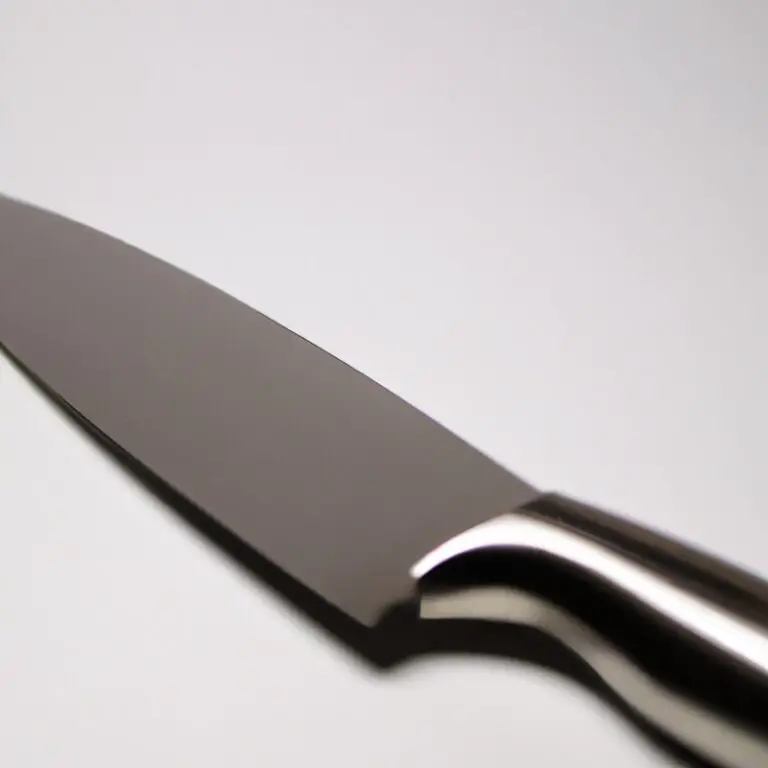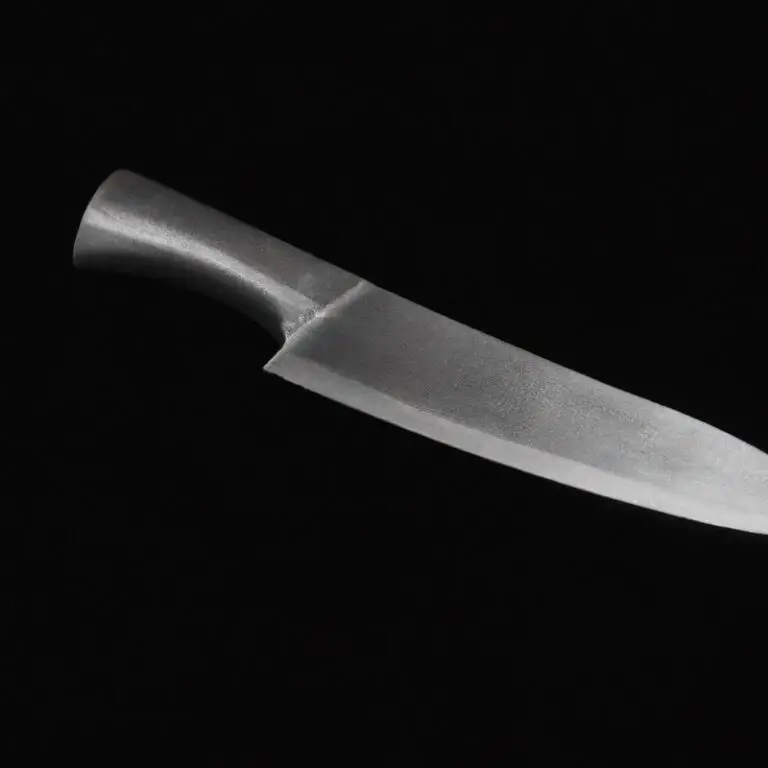How To Protect a Santoku Knife With a Sheath – Easy Tips
Key Takeaways:
- A Santoku knife sheath is essential for protecting the blade’s sharp edge and preventing accidental cuts.
- Opt for a well-fitted sheath made of durable materials like leather or plastic for optimal protection.
- Proper storage of your Santoku knife in a sheath can extend its lifespan and maintain its sharpness over time.
- Remember to clean and dry your knife thoroughly before storing it in the sheath to prevent rust and damage.
Imagine investing in a quality Santoku knife only to have it lose its sharpness in just a few uses. If you’re a professional chef or a home cook who’s passionate about their kitchen tools, you know the importance of taking care of and protecting your knife.
That’s where a good quality knife sheath comes in.
In this article, I am going to dive deep into the subject of how to protect your Santoku knife with a sheath. From different types of knife sheaths to DIY options and proper maintenance, you’ll gain valuable insights on how to keep your Santoku in top shape for years to come.
| Type of Sheath | Material | Pros | Cons |
|---|---|---|---|
| Plastic Sheath | Hard plastic | Lightweight, affordable | Can scratch knife, can have a strong plastic smell |
| Wooden Sheath | Wood | Natural look, environmentally friendly, can be customized | Can absorb moisture, can warp or crack over time |
| Leather Sheath | Leather | Durable, sleek look | Expensive, requires maintenance to prevent mold and decay |
| Magnetic Sheath | Plastic or wood with magnets embedded | Secure hold, easy access to knife | Can scratch knife, may not fit all knife sizes |
The Importance of a Knife Sheath: Why Protecting Your Santoku is Critical
A knife sheath may seem like a small accessory, but it plays a critical role in protecting your Santoku knife. It provides a secure and safe storage solution that prevents the blade from getting damaged or dull.
A knife sheath also protects your hands from accidental cuts or injuries when handling the knife.
It is crucial to invest in a high-quality knife sheath to ensure your Santoku knife stays in great condition and lasts longer. Without a knife sheath, your knife is more susceptible to rust, corrosion, and other forms of damage.
Protecting your Santoku knife with a sheath not only ensures its longevity but also guarantees your safety when using it.
Different Types of Knife Sheaths: Which is Best for Your Santoku?
There are several types of knife sheaths available, each with their unique characteristics. The best sheath for your Santoku depends on your needs and preferences.
Here are the most common types of knife sheaths and their benefits:
- Leather Sheath – Durable and able to withstand the elements, a leather sheath provides excellent protection for your Santoku. It’s also stylish and easily moldable to the shape of your knife.
- Plastic Sheath – Lightweight and waterproof, a plastic sheath is easy to clean and ideal for outdoor activities. However, it may not offer as much protection against sharp edges compared to other materials.
- Nylon Sheath – Flexible and tear-resistant, a nylon sheath is perfect for those always on-the-go. It offers moderate protection against sharp edges and is water-resistant.
- Wooden Sheath – A wooden sheath is perfect for traditionalists seeking a natural look. However, it may not provide as much protection as other materials and should be kept dry to prevent mold and rot.
Choosing a knife sheath that suits your needs is essential to protecting your Santoku and extending its lifespan.
Factors to Consider When Choosing a Santoku Knife Sheath: Size, Material, and Durability
When selecting a Santoku knife sheath, three primary factors to consider are size, material, and durability. Size is crucial because a properly fitting sheath will protect your knife adequately.
Ensure that you select a sheath that is suitable for your particular Santoku knife.
The material also matters since it impacts the knife’s protection from moisture, scratches, and wear. Common materials for knife sheaths include leather, hard plastic, and nylon.
Finally, durability is critical because a weak or fragile sheath will not withstand everyday use and may end up damaging your knife.
Look for sturdy and long-lasting sheaths that can withstand wear and tear.
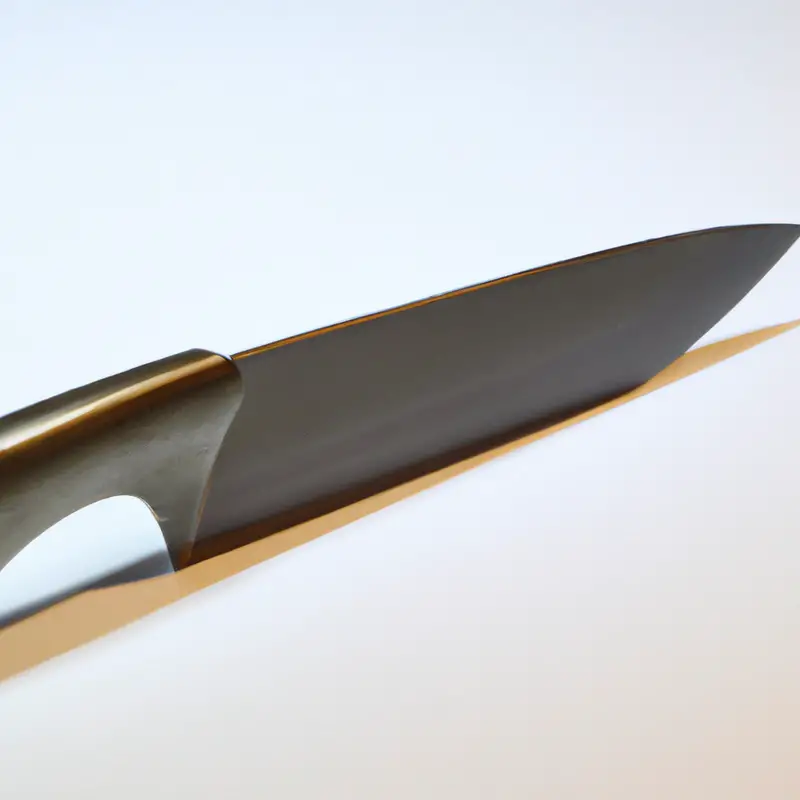
Proper Maintenance of Your Santoku Knife Sheath: How to Clean and Store it Safely
Proper maintenance of your Santoku knife sheath is essential to ensure the longevity of your Santoku knife. Here are some tips to keep in mind:
- Clean your sheath regularly with warm, soapy water, and a soft cloth or sponge. Avoid using harsh chemicals or abrasive cleaners that can damage the sheath.
- Dry your sheath thoroughly after cleaning to prevent moisture buildup. Never store a wet sheath as this can cause mold and mildew to form.
- Store your Santoku knife and its sheath in a cool, dry, and ventilated place away from direct sunlight. This will prevent the sheath from deteriorating, and your knife will remain sharp for longer.
- Avoid placing your Santoku knife or its sheath in a dishwasher or washing machine. This can cause the sheath to warp or break, and your knife can become dull or damaged.
By following these tips, you can ensure that your Santoku knife remains in top condition, and its sheath remains sturdy and protective for years to come.
Using Your Knife Sheath Effectively: Tips and Tricks to Protect Your Santoku
Using the knife sheath effectively is crucial for protecting the Santoku knife. Here are some tips to help you prolong the life of your knife and avoid damaging the blade:
- Always ensure that the blade is clean and dry before placing it in the sheath.
- Use the sheath each time you store or transport the knife to prevent it from getting scratched or chipped.
- Don’t force the knife into the sheath; instead, gently slide it in until it snaps securely in place.
- Avoid storing the knife in a damp or humid place, as this could cause rusting.
- Keep the sheath clean by wiping it with a damp cloth and allowing it to dry thoroughly before storing it.
By following these simple tips, you can effectively protect your Santoku knife with its sheath and preserve its sharpness and strength for years to come.
Common Mistakes to Avoid When Handling Your Santoku Knife Sheath
Handling your Santoku knife sheath may seem like a simple task, but making even small mistakes can cause damage to your knife or the sheath itself. Here are some common mistakes to avoid when handling your Santoku knife sheath:
- Forcing the knife into the sheath: This can damage both the knife and the sheath. Instead, gently slide the knife in and out of the sheath.
- Not cleaning the sheath regularly: Over time, dirt and debris can accumulate inside the sheath which can lead to scratches on the knife blade. Clean your sheath regularly to avoid this.
- Storing the sheathed knife in a damp or humid environment: Moisture can cause corrosion on the blade, so it’s important to keep your knife and sheath in a dry area.
- Not checking the fit of the sheath: Make sure your knife fits snugly into the sheath. If it’s too loose, the knife can slip out and cause injury.
By avoiding these common mistakes, you can help protect your Santoku knife and ensure it stays in good condition for years to come.
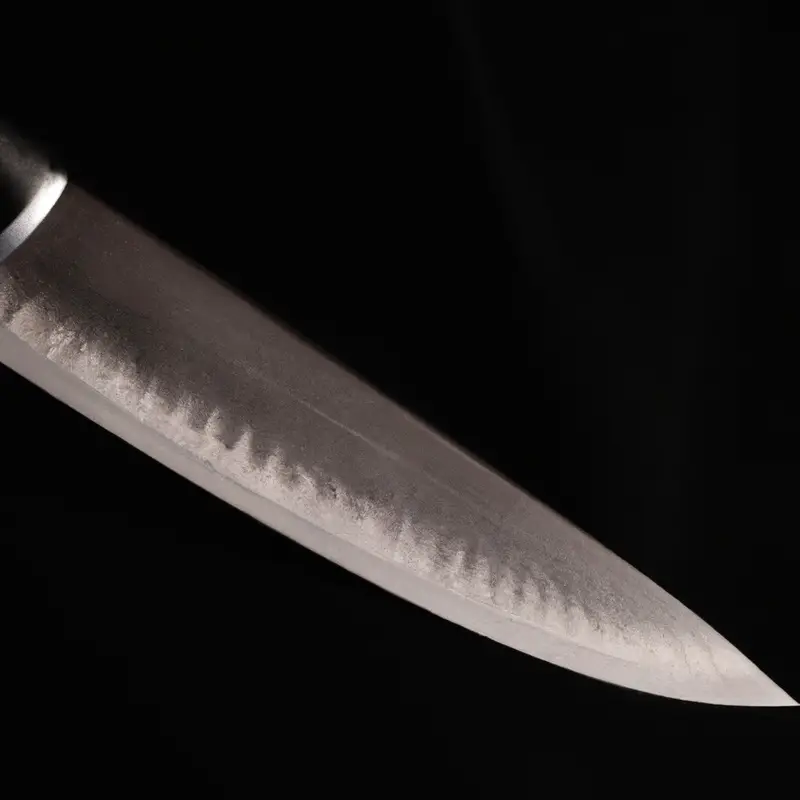
DIY Knife Sheath: Can You Make Your Own Sheath for Your Santoku Knife?
Yes, you can make your own sheath for your Santoku knife. However, it requires some level of expertise in designing, cutting, and stitching.
You should also have the right tools and materials for the job.
The material used for making the sheath should be sturdy, durable, and able to protect your Santoku knife from rust, scratches, and dulling. Leather and Kydex are popular materials used for making knife sheaths, although you can explore other options such as wood or metal.
There are plenty of resources online that offer tutorials and guidance on how to create your own knife sheath.
DIY knife sheaths can be a great way to personalize your Santoku knife and ensure it is adequately protected. However, if you are not confident in your ability, it’s best to leave the task to professionals to avoid damaging your knife.
The Importance of Professional Sharpening: How to Protect Your Santoku with Regular Maintenance
A sharp Santoku knife is essential for efficient and safe cooking, making it crucial to maintain its sharpness with regular sharpening. Professional sharpening services are recommended for Santoku knives as they are complex and require specific sharpening techniques.
A dull blade not only affects the knife’s performance but also increases the risk of accidents in the kitchen.
Regular professional sharpening will enhance the longevity of your Santoku knife, making it a valuable investment for any home cook. Remember to handle your knife with care to prevent damage and maintain its sharpness by sharpening every six months or as needed.
The Best Brands for Santoku Knife Sheaths: A Comprehensive Review and Buying Guide
When it comes to choosing the best brand for your Santoku knife sheath, there are a variety of options to consider. Some of the most popular brands include Shun, Wusthof, and Global.
Shun knives are known for their high-quality materials and attention to detail.
Their sheaths are often made of durable nylon and feature a snap closure for safe storage. Wusthof sheaths are crafted from leather and fitted to the specific size of their knives.
They are known for their snug fit and sleek design.
Global knives tend to come with plastic sheaths that are both lightweight and protective. They also feature convenient belt clips for easy access.
When shopping for a Santoku knife sheath, it’s important to consider the size of your knife and the material of the sheath.
Look for brands that prioritize durability and protection. Keep in mind that some brands may offer sheaths specifically designed for their Santoku knives, which can be a great option for optimal fit and protection.
Final Verdict
Protecting your Santoku knife with a sheath is critical to ensure its longevity and performance. By choosing the right sheath size, material, and durability, maintaining its cleanliness and storing it safely, and handling it effectively, you can protect your Santoku knife investment for years to come.
Avoiding common mistakes and considering professional sharpening also contribute to its effectiveness.
Whether purchasing a pre-made sheath or crafting your own, it is essential to select a reputable brand that fits your needs. As an expert in knife care and maintenance, I can assure you that implementing these tips and tricks will ultimately enhance your overall cooking experience and optimize your Santoku knife’s performance.
Protecting your Santoku knife is not just a suggestion but a necessity.
Trust me, it’s worth it!

